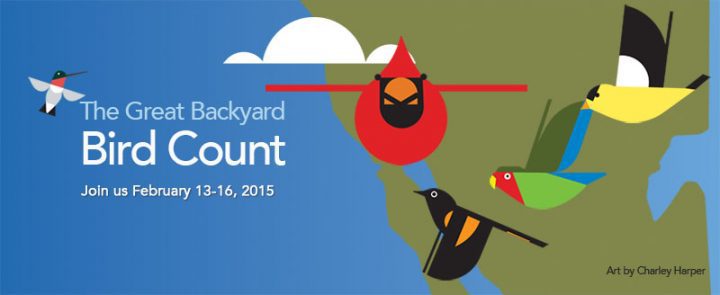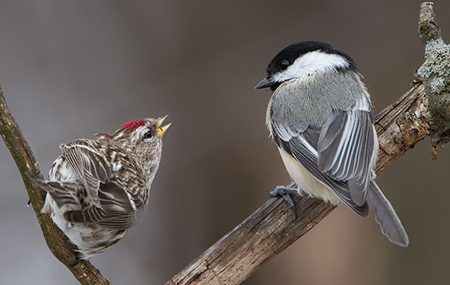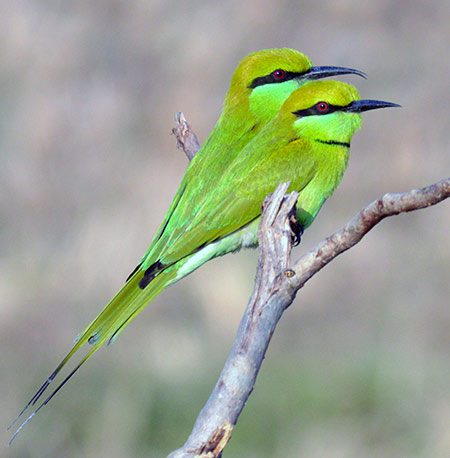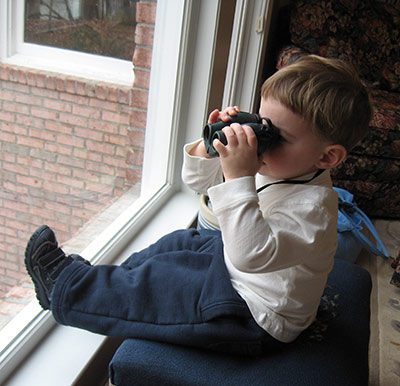GBBC 2015 Preview: Looking for New Birds—and New Birders
By Pat Leonard February 9, 2015
The 18th annual Great Backyard Bird Count includes Valentine’s Day this year, with the count spanning four days from February 13 through 16. That’s fitting, given that people who join the GBBC love birds and love sharing what they see.
An estimated 140,000+ bird watchers from 135 countries contributed their observations during the 2014 GBBC. Their collective effort was incredible—more than 4,000 species counted, or 40% of all the bird species in the world, over just a three-day span.
Participation is free and easy—just count up the birds you see over the second weekend in February, either right in your backyard or as far as you’re willing to venture, and report what you find on the GBBC website. For the photographers among you, check out the 2015 GBBC Photo Contest. You can start submitting photos Friday, February 13th (only photos taken during the GBBC can be entered).
Here’s a peek at what birders can expect for this year’s big global count.

Snowy Owls Again, and Winter Finches
Magnificent Snowy Owls are popping up again this winter, and while there aren’t quite as many as last winter, there are still significantly higher snowy numbers than usual. Check out this eBird map showing where Snowy Owls have been reported from November 2014 through today.
Winter finches are also dropping farther south, as they typically do when seed crops are down in the boreal forests of Canada. Pine Siskins are being found as far south as Florida and Texas this year, Common Redpolls are beginning to make a good push south into the Lower 48 States, and reports of Red Crossbills are streaming in to eBird from the Pacific Northwest.
Common Birds Make for Good Science
While it’s exciting to see an unusual bird, scientists stress the importance of GBBCers reporting the regular traffic to their backyards—the chickadees, Northern Cardinals, Tufted Titmice, and Steller’s Jays—as well as the size of flocks such as Snow Geese, European Starlings, or Red-winged Blackbirds. Reporting your common bird observations during this annual four-day window may seem like a small thing, but it helps scientists analyze some of the larger and longer-trend changes in bird populations. Has the Eurasian Collared-Dove finally expanded its range into your area? Are there more ducks and geese than usual? Are Red-bellied Woodpeckers farther north than they were 10 years ago?

Great GLOBAL Backyard Bird Count
In 2014, only the second year of broad international participation in the Great Backyard Bird Count (thanks to a switch to eBird for list management), bird counts were submitted from all seven continents. India was #3 among countries for checklists (behind the U.S. and Canada), and GBBC was a springboard to a vibrant eBird India community that just crossed one million observations. On GBBC weekend, watch the India page to see if they beat last year’s totals of 820 species on 3,209 checklists.
Australia, Argentina, Ecuador, and much of Central America also have growing eBird communities, and other countries are ramping up—such as Portugal, Serbia, the United Arab Emirates, Kuwait, Iran, and Taiwan, where a Mandarin language option will soon be available. New countries joining the GBBC this year include Malaysia, the Philippines, and Turkey.
After you enter your bird sightings, take a trip around the world to see what your fellow GBBCers are seeing all over the planet by using the GBBC location explorer tool.
New this year…Pledge to Fledge

Nearly 70 percent of GBBC participants say they were encouraged to appreciate birds by friends, family, or colleagues. In other words, most new bird watchers are minted through a mentor who took a little time to share their passion.
To encourage that mentorship among birders, this year the GBBC is incorporating a grassroots campaign called “Pledge to Fledge,” an effort begun by the Global Birding Initiative. The underlying theory relies on basic math—if every bird watcher inspired just one other person to watch birds, there would be twice as many people who enjoy and care about birds. And once a person cares about and appreciates birds, they are much more inclined to do what they can to protect and preserve them.
Birders who want to entice someone to come along and count birds for the GBBC can find tips and materials at the Pledge to Fledge web page.
How did you become a birder?
Birding can make a big difference in the lives of young people. These students at Cornell University— who are now pursuing careers in biology, ornithology, and conservation—say they owe their love of birding to an adult to who took the time to mentor a young person. You can find ideas and tips for being a birding mentor at the Pledge to Fledge web page
 “My dad introduced me to birds and taught me how to bird! So I owe it all to him!”
“My dad introduced me to birds and taught me how to bird! So I owe it all to him!”
—Ben Barkley
 I was introduced to birding by my third grade teacher…I had been somewhat interested in birds before that, but that was the real spark.”
I was introduced to birding by my third grade teacher…I had been somewhat interested in birds before that, but that was the real spark.”
—Benjamin Van Doren
 I was introduced to birding by my mom. When I was about eight years old we were hiking and found an Ovenbird nest. Never had I seen anything so cool!
I was introduced to birding by my mom. When I was about eight years old we were hiking and found an Ovenbird nest. Never had I seen anything so cool!
–Hope Batcheller
 “One of my Dad’s coworkers mentioned she was a birder and invited us to a bird outing. We went to the central highlands of Mexico to visit an alkaline lake and some pre-Hispanic ruins, saw awesome birds, and I was immediately hooked!”
“One of my Dad’s coworkers mentioned she was a birder and invited us to a bird outing. We went to the central highlands of Mexico to visit an alkaline lake and some pre-Hispanic ruins, saw awesome birds, and I was immediately hooked!”
–Eric Gulson
 My family has always been into the outdoors and wildlife…my parents would take me and my siblings to see unusual birds.
My family has always been into the outdoors and wildlife…my parents would take me and my siblings to see unusual birds.
– Teresa Pegan

All About Birds
is a free resource
Available for everyone,
funded by donors like you
American Kestrel by Blair Dudeck / Macaulay Library
